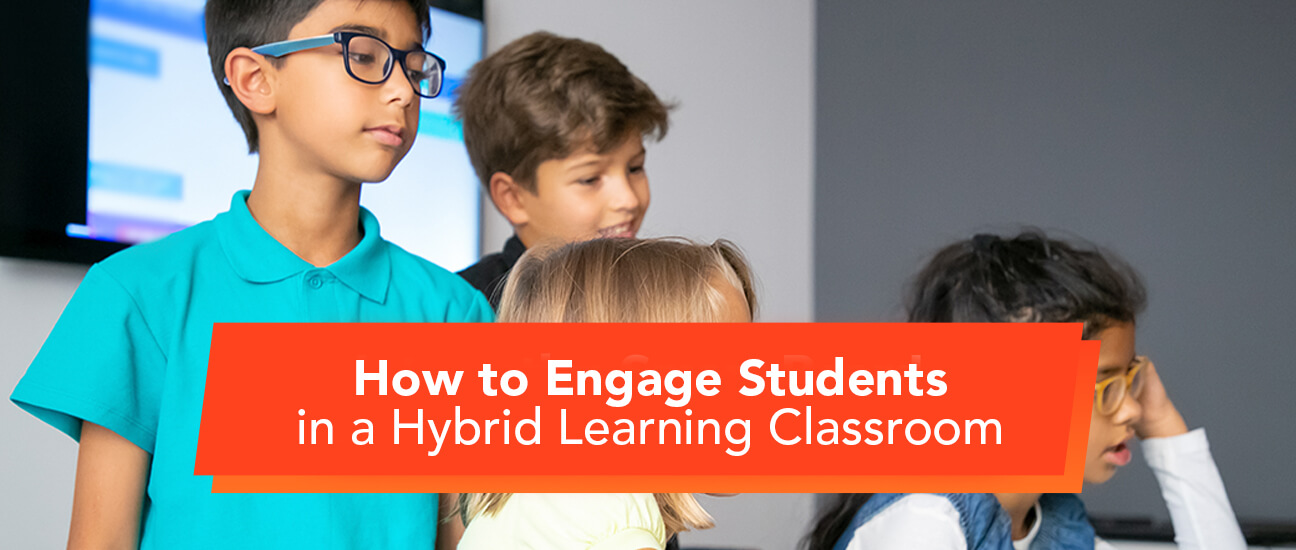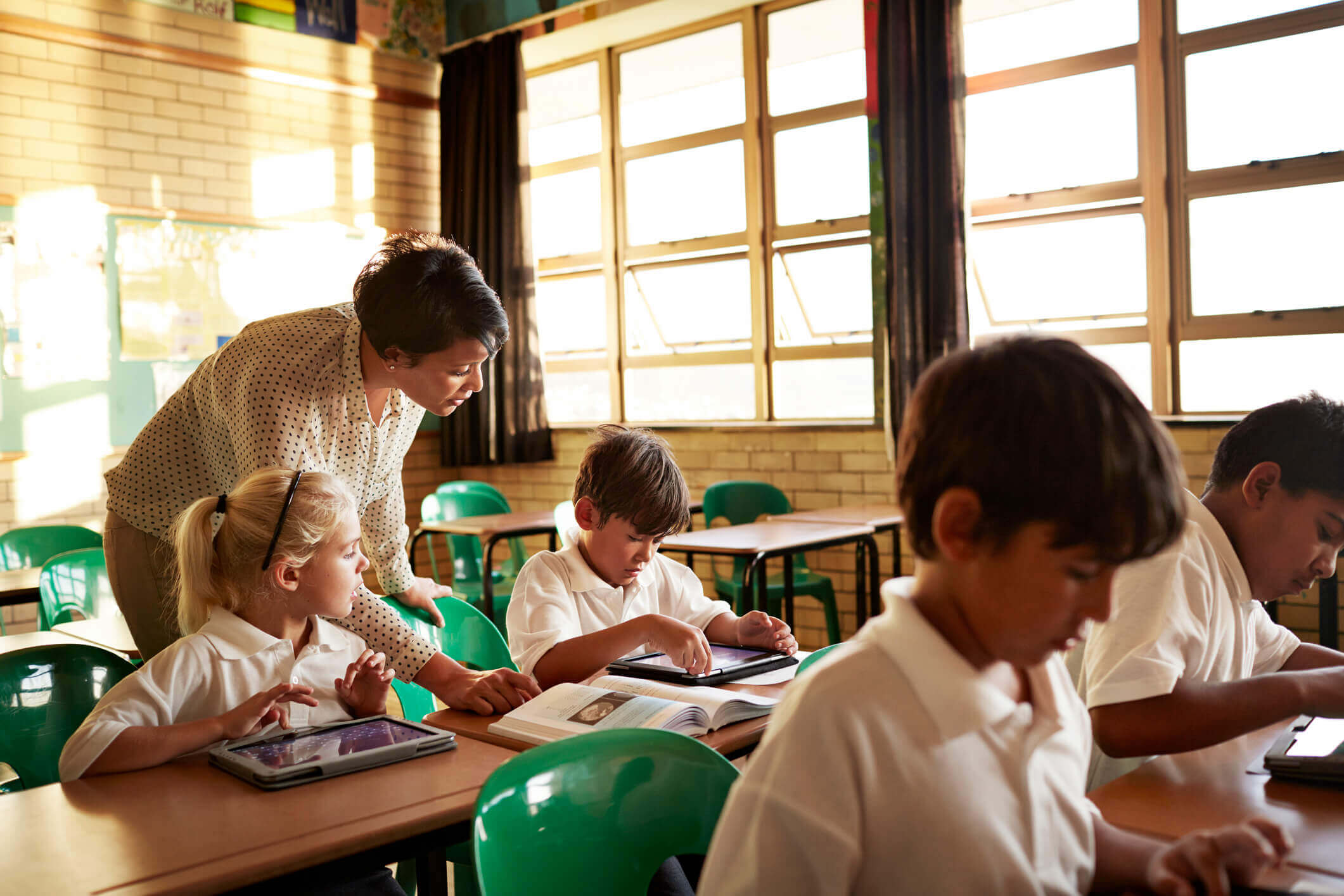Published on April 22nd, 2021
How to Engage Students in a Hybrid Learning Class
7 minute read

While the recent changes within education have been rapid, it has not been easy for teachers to focus on student engagement, which remains a critical part of student success. Hybrid classrooms, where some students learn in the classroom, while the others simultaneously have their lessons online, further complicate this challenge. Teachers can’t be in multiple places at once to manage everything and everyone.
Fortunately for teachers, there are effective tools and strategies available to overcome this hurdle when managing a hybrid learning environment:
Break the Ice
Start a class with 5-10 minutes of open, unstructured time before diving into a lesson plan. This allows the class to connect to one another, enabling social and emotional learning (SEL). This is also a great opportunity to check in with students before a lesson officially starts.
Unify Students at Home and in the Classroom with EdTech
82% of teachers in a recent State of Technology in Education report stated that interactive technology use routinely combined with traditional resources and teaching methods, will be the most likely trend we will see over the next ten years. Edtech tools can help teachers to explore, critique, and collaborate by sharing content, rather than needing to have multiple different lessons planned across the same topic. These tools also have the power to unify in-class and at-home students. For example, interactive displays (such as the Promethean ActivPanel interactive board) allow students in class to go up to the board and interact with it while students at home provide guidance on what to do, how to interact with content. This breaks down the barrier between students in different environments and enables student-led learning in an intuitive, frictionless way.
Take Brain Breaks
Student attention spans are limited, and virtual learning along with all-day video screen time has only compounded this struggle. Many teachers are implementing brain breaks: teach a topic and then take a break. These brain breaks help keep students from checking out. Allowing students at home to turn off their cameras during break time can help keep Zoom fatigue at bay.
Break Out into Groups
Breakout groups are a great way to foster group interactivity. It allows students to interact with lesson content (such as interactive lessons delivered through ClassFlow teaching software) and each other. For example, “Zoom Rooms” offer a space where students can collaborate on a topic and build a presentation to share with the class. There are other ways technology can help enliven both whole-class and small-group instruction. Today there are great apps that allow students and teachers to chat with one another so conversations can take place privately when needed.
Fight Fatigue
Zoom fatigue is real. Like everyone, students’ brains have a difficult time processing information on video calls due to a number of behavioral and cognitive reasons. This is why a long video lesson can feel exhausting. Fight the fatigue by planning a fun game like Jeopardy! at the end of each week. This gives everyone something to look forward to and engages kids on an SEL level which is key for student engagement.
Mix it Up
Variety is key with hybrid environments. Don’t fall into a pattern of teaching with the same slide presentation format day after day. Bring in as many different components/formats as you can in your lessons to keep things interesting. While this task can seem daunting, know that there are resources available to help keep your lesson content fresh and varied. There is a ton of great material available online, including robust marketplaces with everything you might need.
Make a Move
Get moving! Encourage students to physically get up and move around if a drop in energy is palpable. For younger students, get up and dance. For older classes, try a scavenger hunt where students need to find things around the house.
The unpredictable twists of 2020 have certainly created new challenges in education for driving student engagement. However, it has also yielded a new era of creativity in teaching. As we look to the future of student engagement, it’s clear that the latest in education innovation is blazing new trails for real-time collaboration and has opened a whole new range of possibilities for teachers to continue to make an impact with their students.
Do you want to learn more about student engagement? Check out some additional resources below!
• What is student engagement?
• 12 Student Engagement Strategies
• How to Engage Students Without Relying Solely on Technology
• How Do You Keep Students Engaged at the Beginning and End of a Lesson?
• The benefits of reflection in education
• How to Engage Shy and Quiet Students in The Classroom?
• How to Engage Disengaged Students
• How To Engage University Students
• How to Engage International Students




